There are completely different types of guitar bridges on the market. Did you know about that? It’s true! In this article we will consider the question of what types of bridges are available. We’ll take a closer look at their pros and cons, and last, but not least give you an advice on what type of bridge will better suit your electric guitar. Ready to move on? Let’s go!
Table of Contents
Electric guitar bridge. Which one to choose?
When it comes to choosing a bridge for your guitar, there are several factors to consider. First, what type of guitar do you have, what kind of a model. Second, the size of the guitar. Guitar bridges come in all shapes and sizes, and what works for one guitar may not work at all for another. It is also important to understand the condition of the strings. Some strings are compatible with some bridges, others with different.
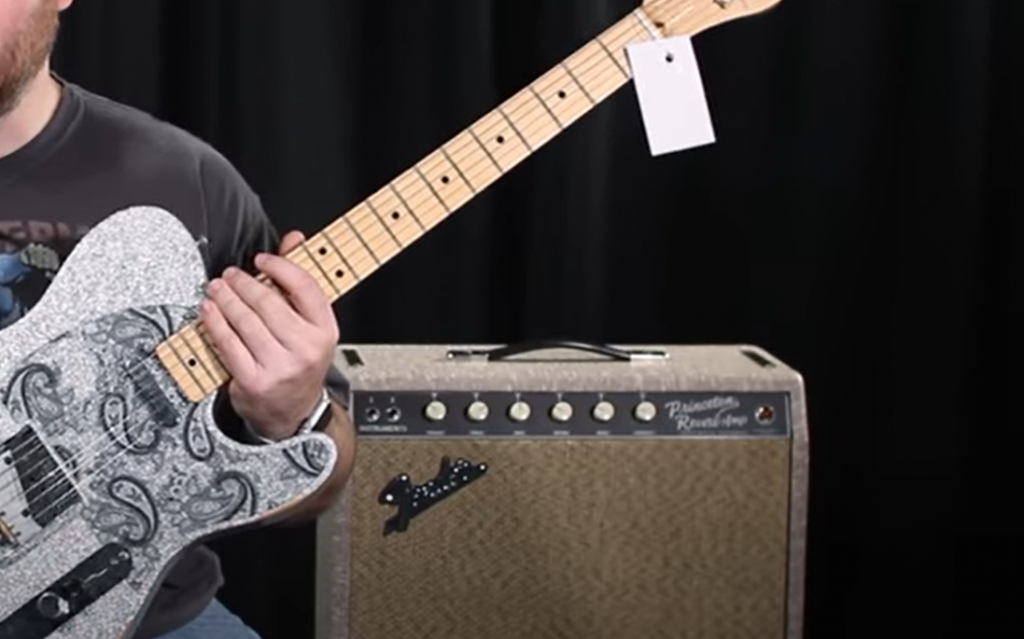
Obviously, the main point when choosing and buying a bridge for a guitar is to consider the fact what kind of music you are going to play on this guitar. Experienced guitarists know that some types of bridges work best for certain styles of music, while others work well for other styles.
Focus on your interests and it will be much easier for you to find the right bridge for your electric guitar.
Let’s look at what types of bridges exist.
Tremolo vs Fixed
One of the main distinctions between different types of electric guitar bridges is whether they are fixed or tremolo/floating. A tremolo/floating bridge, on the other hand, is not attached to the body of the guitar. This allows the guitarist to loosen or tighten the strings by using a vibrato arm (also called a whammy bar).
Both two types of bridges have their pros and cons. Fixed bridges can be more stable, and it’s a big plus if you rely on this type of feature. On the other hand, tremolo/floating bridges offer more flexibility in terms of playing techniques (such as bending or “dive-bombing” the strings) and can add an extra level of vibrato to your sound.
If you’re looking for more flexibility and creativity in your playing, a tremolo/floating bridge might be the way to go. If you’re more concerned with tuning stability and easy setup, a fixed bridge might be a better option. [1]
Fixed bridges
As we mentioned before, a fixed bridge is permanently attached to the body of the guitar. This means that the strings are always in contact with the bridge, and there is no way to adjust the tension of the strings. Fixed bridges are generally considered to be more stable than tremolo/floating bridges, which can be a good thing if you are looking for tuning stability. They are also typically easier to set up and require less maintenance than tremolo/floating bridges. [2]
Fixed bridges may come in a variety of models, so here are examples of each one:
Hardtail bridges
Hardtail bridges are often considered as the most popular type of fixed bridges. They get their name from the fact that they don’t have any kind of vibrato/tremolo system. The strings are simply attached to the bridge and passed through the body of the guitar.
These types of bridges are good if you prefer stability in a guitar bridge.They are quite comfortable in everyday life and do not require much effort in maintaining proper condition. Hardtail bridges are a good choice for beginners or players who don’t want to deal with the hassle of setting up and maintaining a tremolo/floating bridge.
Tune-o-matic bridges
Tune-o-matic bridges are similar to hardtail bridges, but they have a few key differences. The biggest difference is that tune-o-matic bridges allow the guitarist to adjust the tension of the strings. This can be done by turning screws that loosen or tighten the bridge saddles. This allows the guitarist to fine-tune their intonation (the tuning of the strings). Tune-o-matic bridges are not as easy as hardtail bridges, but they offer more flexibility in terms of string tension and intonation.
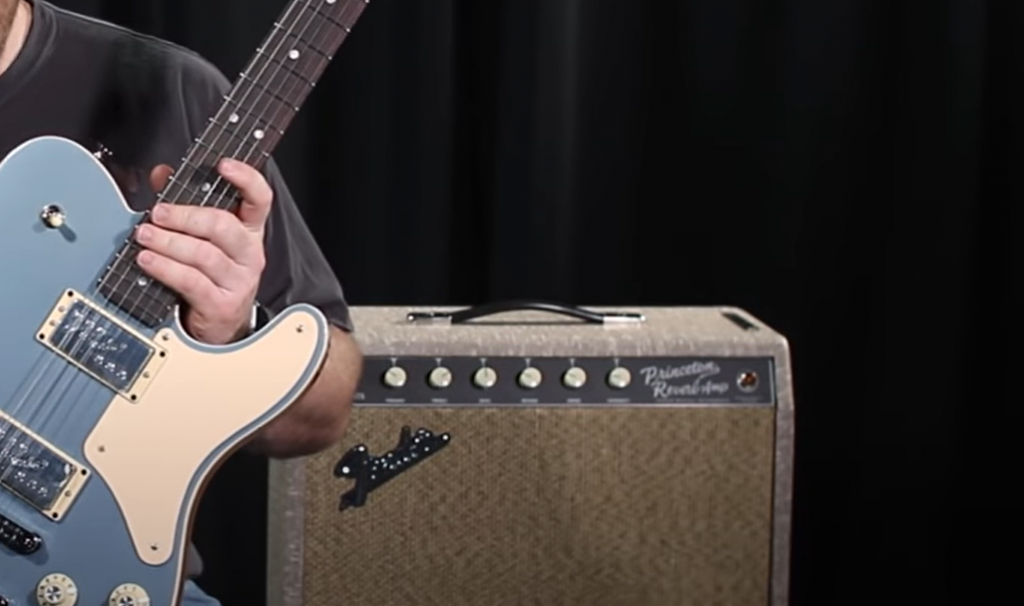
Tune-o-matic bridges are a good choice for players who want more control over their intonation. They’re also a good choice if you’re looking for more flexibility in terms of string tension. Tune-o-matic bridges are more complex than hardtail bridges, so they might not be the best choice for beginners.
Wrap-around bridges
Wrap-around bridges are a type of fixed bridge that wraps around the tailpiece of the guitar. The strings are passed through the body of the guitar and attached to the bridge at the back. Wraparound bridges are simple and effective, and they’re a good choice if you’re looking for tuning stability. They’re also relatively easy to set up and require little maintenance.
A wraparound bridge is a bridge/tailpiece unit that is constructed traditionally from a metal bar. The bar has six holes drilled in it, which is where the strings are loaded from the front. The strings wrap around the curved bar and head over the pickups and toward the neck.
To change the intonation, use a small hex-screwdriver to loosen or tighten the screws on each end of the bridge. This will move the bridge slightly forward or backward and adjust string length.
In 1953, Gibson updated the bridge on their Les Paul model to what is now known as the wraparound bridge. This improved design was then standard equipment on models such as the Les Paul Special and Junior. Even after a more adjustable bridge was introduced, many guitarists preferred the simplicity of the wraparound bridge. [3]
Although single-action bridges have some restrictions on how they can be tuned, it is often possible to find a good compromise that works for all the strings. Despite its simple appearance, many people like this bridge because it has great sustain and resonance.
Tremolo/floating Bridges
Tremolo/floating bridges are a type of bridge that allows the guitarist to adjust the tension of the strings. Tremolo/floating bridges are more complex than hardtail bridges, but they offer more flexibility in terms of string tension and intonation.
Synchronized Tremolos
The synchronized tremolo was introduced by Fender in 1954 on the Stratocaster. It uses a block bridge that is attached to the guitar body with screws, rather than being suspended by springs like most other tremolos. The big advantage of this design is that it allows for more precise tuning because the bridge is more stable. The disadvantage is that it’s more difficult to set up and maintain.
Locking Tremolos
Locking tremolos are a type of tremolo that uses a locking mechanism to hold the strings in place. This prevents the strings from slipping out of tune, even when heavy vibrato is used. Locking tremolos are more complex than non-locking tremolos, but they offer better tuning stability.
It was introduced in 1976 and quickly became popular among rock and metal guitarists who used it for its extreme pitch range and divesbombs (a technique where the guitarist lowers the pitch of the note by rapidly pressing down on the whammy bar).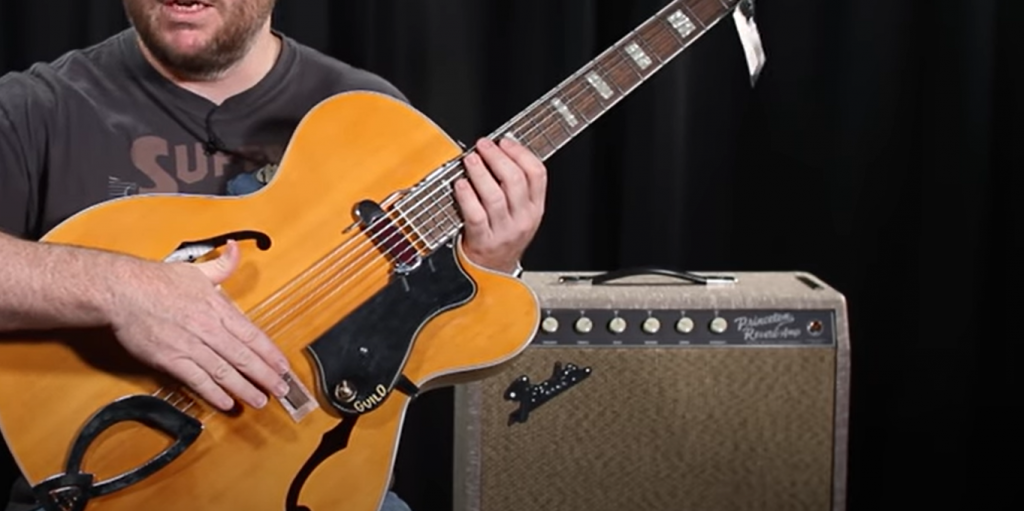
The Floyd Rose Tremolo System consists of a bridge with individual string saddles , a tremolo arm, and a locking nut. The strings are locked in place at the nut with a set of retaining claws. The bridge is mounted on springs so that it can float freely. To keep the bridge from moving too far, there is a stopbar tailpiece that is also mounted on springs.[4]
Bigsby Tremolos
The spring-loaded tensioner keeps the strings in tune by providing counteracting force to the tremolo arm.
The disadvantage of the Bigsby Tremolo System is that it can be difficult to keep the strings in tune when heavy vibrato is used.
The Bigsby Tremolo System was introduced in 1948 and quickly became popular among country and western guitarists who used it for its smooth, vibrato sound. The Bigsby Tremolo System is still in use today by many different types of guitarists.[5]
Stetsbar Tremolos
The Stetsbar Tremolo System is a type of tremolo that uses a linear-motion vibrato arm to alter the pitch of the strings. The Stetsbar Tremolo System consists of a bridge with individual string saddles, a tremolo arm, and a spring-loaded tensioner. The tremolo arm is mounted on the side of the guitar and is used to push or pull the strings.
The advantage of the Stetsbar Tremolo System is that it can be used for both gentle vibrato and aggressive pitch bends.
Why is guitar bridge crucial!
The guitar bridge is a crucial part of the instrument, as it helps to transfer the vibration of the strings to the body of the guitar. The type of bridge you choose will have a big impact on the sound and playability of your guitar. There are many different types of bridges available, so it’s important to choose one that best suits your needs.
Electric guitars typically have one of three types of bridges: fixed, tremolo, or Bigsby. Each type of bridge has its own unique advantages and disadvantages.
Fixed bridges are the simplest type of bridge, as they don’t have any moving parts. This makes them very sturdy and reliable, but it also means that they can’t be used for techniques like vibrato or pitchbending.
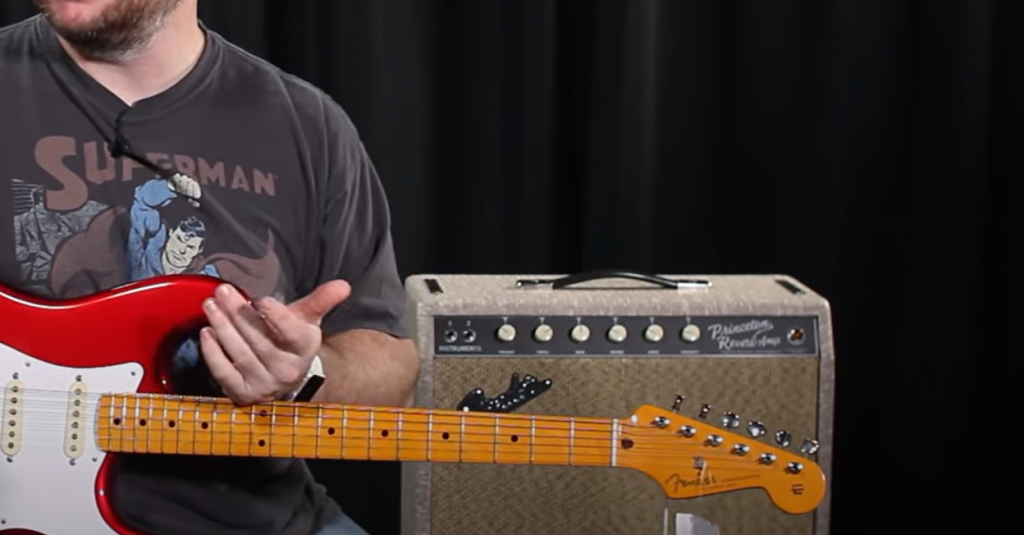
Tremolo bridges are designed to allow the guitarist to alter the pitch of the strings using a vibrato arm. Tremolo bridges are more complex than fixed bridges, but they offer better tuning stability and a wider range of techniques that can be used.
Bigsby bridges are similar to tremolo bridges, but they use a linear-motion vibrato arm instead of a tremolo arm. This allows for more aggressive pitchbending techniques, but it can also make the guitar harder to keep in tune.
No matter which type of bridge you choose, be sure to get one that is well-made and will fit your guitar properly. A good bridge can make a big difference in the sound and playability of your instrument.
What type of bridge does a Strat have?
The Stratocaster is a popular type of electric guitar that was first introduced in 1954. The Stratocaster has a tremolo bridge, which allows the guitarist to alter the pitch of the strings using a vibrato arm. The tremolo bridge is mounted on springs so that it can float freely, and there is a stopbar tailpiece that is also mounted on springs to keep the bridge from moving too far.
The Stratocaster’s tremolo bridge provides good tuning stability and allows for a wide range of techniques, such as vibrato and pitchbending. However, the disadvantage of the Stratocaster’s tremolo bridge is that it can be difficult to keep the strings in tune when heavy vibrato is used. [6]
The Classics: Telecaster Fixed and Stratocaster Tremolo vs Gibson Tune-O-Matic
The Telecaster is a popular type of electric guitar that was first introduced in 1951. The Telecaster has a fixed bridge, which means that the strings are anchored to the body of the guitar and can’t be moved.
Stratocaster provides many unique techniques that can be used while playing. Its stability is what draws players to choose this type of tremolos.
How do Fixed bridges and Tremolo bridges stack up the Tune-O-Matic?
The Tune-O-Matic is a type of bridge that is used on many electric guitars, including the Gibson Les Paul. The Tune-O-Matic bridge has two posts that the strings are threaded through, and each post has an adjustable screw. This allows the guitarist to adjust the tension of the strings, which can be helpful for keeping the guitar in tune.
The Tune-O-Matic bridge is similar to a fixed bridge, but it offers more adjustability and better tuning stability. However, the disadvantage of the Tune-O-Matic bridge is that it can be difficult to change strings with this type of bridge.
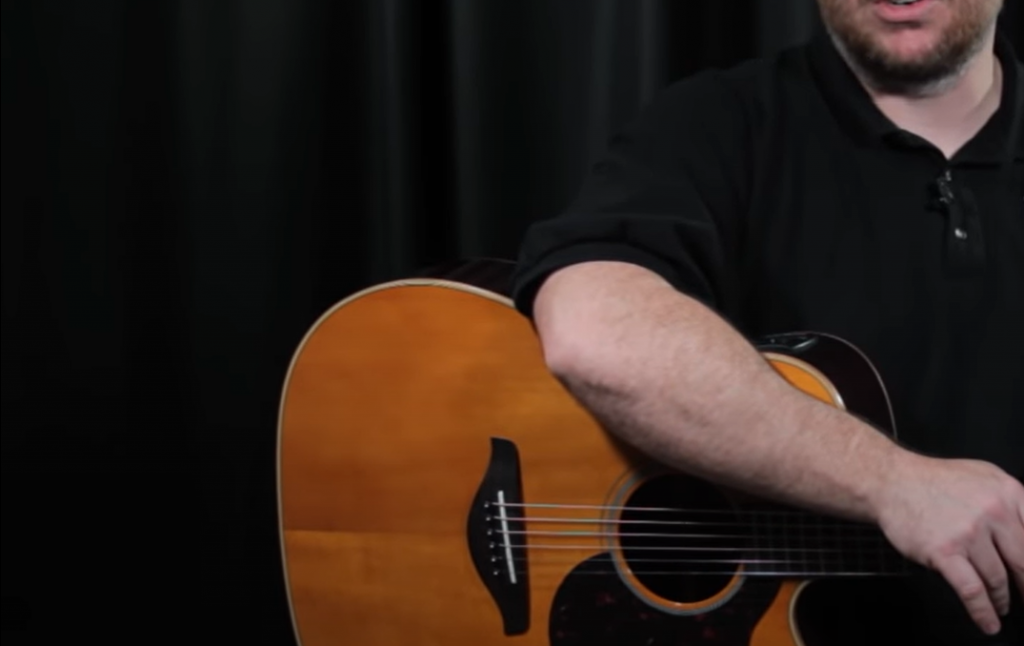
Fixed bridges are similar to the Tune-O-Matic bridge, but they don’t have adjustable screws. This means that the tension of the strings can’t be adjusted, which can make it difficult to keep the guitar in tune.
Can electric guitar bridges be replaced?
It is dependent on the structure. If the guitar has a separate bridge in place of the tailpiece, such as a standard Les Paul, you should be able to loosen the strings enough to lift out and replace it. There’s no way to replace a Fender bridge without taking the strings off.
Replacing an electric guitar bridge is not a difficult task, but it is important to make sure that you get a bridge that is compatible with your guitar. You should also take care to intonate the new bridge properly so that your guitar will sound in tune.
Are Guitar bridges Universal?
No, guitar bridges are not universal. The bridge must be compatible with the specific make and model of guitar that you have.
It is important to note that electric guitars often have different types of bridges depending on the style of music that they are meant to be played. For example, a jazz guitar might have a different type of bridge than a rock guitar.
If you are unsure about which type of bridge your guitar has, or which type of bridge you need, it is best to consult with a professional who can help you choose the right bridge for your instrument. [7]
Best Electric guitar Bridge for beginners
The best electric guitar bridge for beginners is the fixed bridge. Fixed bridges are quite simple and don’t require special maintenance nor techniques. You can also try tremolo bridges, although they are more complex.
Tremolo bridges can be more difficult to use, but they offer a wide range of possibilities for pitch-bending and vibrato effects.
Once you have more experience with playing the guitar, you can experiment with different types of bridges to find the one that suits your style of playing the best.
Least Recommended Guitar Bridge For beginners
The tremolo bridge is the least recommended guitar bridge for beginners. Tremolo bridges can be more difficult to use, and they require special techniques to keep the strings in tune.
Fixed bridges are easy to use and don’t require any special techniques or tuning methods.Why is a Guitar bridge angled?
A guitar bridge is angled so that the strings sit at a higher tension when they are tuned to pitch. This helps to keep the strings in tune and prevents them from going out of tune as easily.
The angle of the bridge also affects the tone of the guitar. A more severe angle will result in a brighter, twangier sound, while a shallower angle will produce a mellower tone.
Some guitarists prefer to use a tremolo bridge, which allows them to create vibrato and pitch-bending effects by moving the bridge up and down. Tremolo bridges are usually set at a shallower angle so that the strings don’t go out of tune as easily.
Does bridge affect tone?
The bridge affects the tone of the guitar in two ways. First, the angle of the bridge affects the tension of the strings, which in turn affects the tone.

Second, the type of bridge you use can also affect the tone of your guitar. Tremolo bridges are used to create vibratos which is achieved by moving up and down the bridge. This can give your guitar a wider range of tones to work with.
If you are looking for a specific type of tone from your guitar, it is best to experiment with different types of bridges to see which one gives you the sound you are looking for.
FAQ
Is hardtail better than tremolo?
It depends on what type of sound you are looking for from your guitar.
A hardtail bridge is more stable and won’t go out of tune as easily as a tremolo bridge. However, a tremolo bridge can be used to create vibrato and pitch-bending effects by moving the bridge up and down.
Can you replace a tremolo bridge with a fixed bridge?
Yes, you can replace a tremolo bridge with a fixed bridge. However, you might need to make some modifications to your guitar to do so.
For example, if you have a Stratocaster-style guitar with a tremolo bridge, you will need to fill in the holes left by the tremolo springs. You can do this by routing out some wood from the body of the guitar or by using Tremol-No products, which are designed to do this.
Once you have made these modifications, you will be able to use a fixed bridge on your Stratocaster-style guitar.
Keep in mind that not all guitars are able to accommodate a different type of bridge. If you are unsure, it is best to consult a professional guitar technician to see if your guitar can be modified.
What bridge does Imanez use?
Ibanez uses a variety of different bridges on their electric guitars. The most common type of bridge they use is a tremolo bridge. However, they also offer some models with fixed bridges.
If you are looking for a specific type of guitar, it is best to consult the Ibanez website or a professional guitar technician to see which models they offer that will suit your needs.
Useful Video: Guitar 101: What You Need to Know About Electric Guitar Bridges
Conclusion
Electric guitar bridges come in all shapes and sizes, each with its own advantages and disadvantages. Whether you’re looking for a fixed bridge or one that can be adjustable, we hope this article has helped you narrow down your choices. Now it’s time to get out there and start trying them out! Which electric guitar bridge is your favorite?
References:
- https://prosoundhq.com/fixed-vs-floating-bridges-whats-the-difference/
- https://blog.sweelee.com/fixed-guitar-bridge/
- https://www.fuzzfaced.net/les-paul-1953-1957
- https://music.stackexchange.com/questions/2477/what-is-synchronized-tremolo
- https://en.wikipedia.org/wiki/Bigsby_vibrato_tailpiece
- https://stereoshore.com/best-strat-bridges/
- https://travelingguitarist.com/guitar-bridge-pins-not-universal/

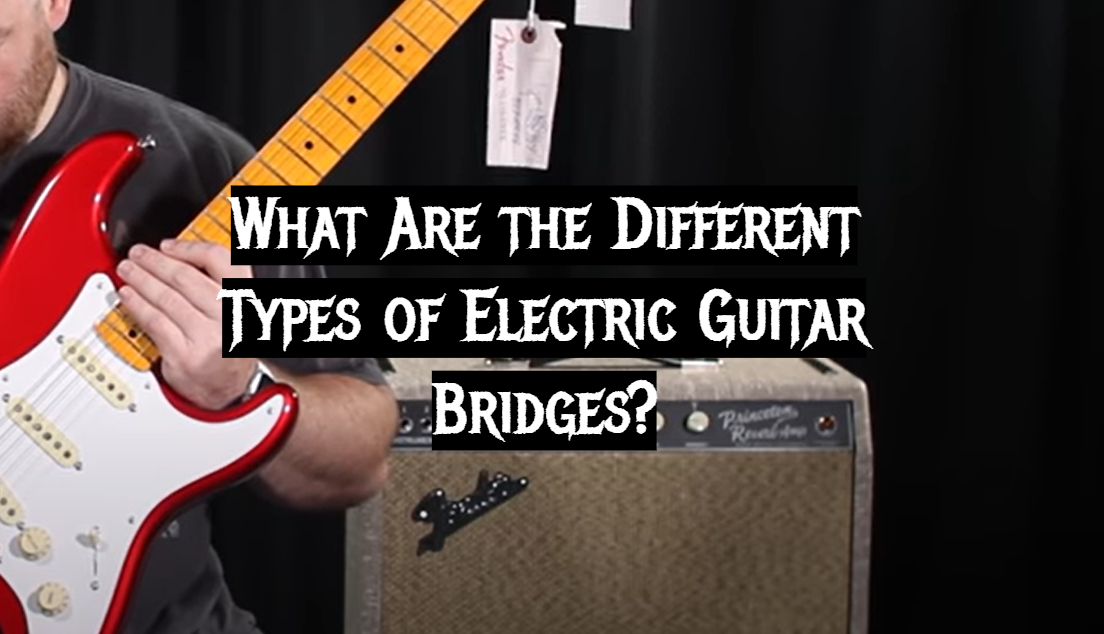




Leave a Reply